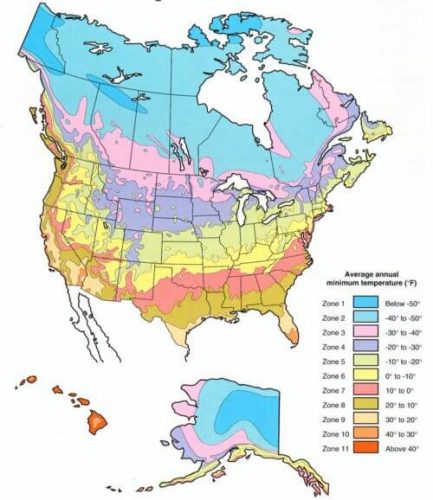| Month | Plants | Actions |
|---|---|---|
| January | In January, we can begin planting frost-tolerant plants. Potatoes, beets, leafy salad greens, Swiss chard, spinach, bulb onions, turnips, radishes, and carrots. Beets and carrots can be transplanted repeatedly from March to September. Bulb onions can be transplanted as early as January. |
The greenhouse should stay above 45 degrees. Water plants as needed. Keep an eye out for pests. Don’t overwater plants to prevent diseases. |
| February | Transplant the frost-tolerant plants into your garden. Make sure you climatize the plants to the outside environment over a few days before transplanting them. Start planting cool-weather plants like broccoli, cabbage, cauliflower, and lettuce. Sow tomatoes if planted from seed. |
Keep the greenhouse between 55 and 65 degrees. Keep an eye out for pests. Keep the soil damp but not wet. Make sure you ventilate your greenhouse during the day as needed. |
| March | Transplant the frost-tolerant plants into your garden. Make sure you climatize the plants to the outside environment over a few days before transplanting them. Start planting cool-weather plants like broccoli, cabbage, cauliflower, and lettuce. |
Keep the greenhouse between 55 and 65 degrees. Keep an eye out for pests. Keep the soil damp but not wet. Make sure you ventilate your greenhouse during the day as needed. |
| April | Transplant your cool-weather plants into your garden, climatizing them in the same manner as you did with your frost-tolerant plants. Now is the time to plant your warm-weather vegetables. These include tomatoes, vining beans, cucumbers, legumes, squash, peppers, eggplant, potatoes, peas, corn, and melons. These plants cannot withstand a frost. Do not move them to your garden until average temps reach 70 degrees. |
Warm weather plants prefer a growing temp of 70-85 degrees. Keep an eye out for pests. Ventilate as needed. The weather can still sneak up on you. Be ready to cover your plants as needed. |
| May | Continue to plant your plants from April. Keep a close eye on any plants you’ve moved into your garden. |
Dampen floors to keep temperatures cool and add humidity to your greenhouse. Mold and other fungi can become a serious problem. Use fungicides as needed. |
| June | This time of year is mostly based on maintaining your plants. | Dampen floors to keep temperatures cool and add humidity to your greenhouse. Mold and other fungi can become a serious problem. Use fungicides as needed. |
| July | Begin the second crop of cool-season vegetables if appropriate for your region. | Dampen floors to keep temperatures cool and add humidity to your greenhouse. Mold and other fungi can become a serious problem. Use fungicides as needed. |
| August | Begin the second crop of cool-season vegetables if appropriate for your region. Climatize your plants at the end of the month for transplanting in your garden. |
Dampen floors to keep temperatures cool and add humidity to your greenhouse. Mold and other fungi can become a serious problem. Use fungicides as needed. |
| September | Climatize your cool-season vegetables for transplanting in your garden. | Expect fluctuating temperatures. Cool or heat your greenhouse as needed. |
| October | Harvest your mature cool-season vegetables. You can continue to plant cool-temperature vegetables as long as the weather holds. |
Bring plants that aren’t hardy inside. Protect your plants as needed as the temperatures drop, especially at night. |
| November | Pot chives, parsley, and mint. Sow certain beans, lettuce, and carrots if you’re growing them from seed. Harvest your mature cool-season vegetables. |
November is our month to focus on repairs. Insulate your greenhouse. Ensure any holes, cracks, or other exterior damage is repaired. If you have heaters, make sure they’re working. Keep the greenhouse dry and cool. On warmer days, you may need to ventilate. |
| December | Pot chives, parsley, and mint. Sow certain beans, lettuce, and carrots if you’re growing them from seed. If you still have a winter garden, maintain it as needed. |
December is the month to clean your greenhouse and prepare for the spring. Clean and organize any unused pots or trays. Wash the windows and disinfect the glass/plastic/frame with a garden disinfectant. Keep the greenhouse dry and cool. On warmer days, you may need to ventilate. |
Additional Considerations and Tips
While these planting times should be pretty accurate for most states in the center of the U.S., We suggest that you get specific planting times based on your plant heartiness zone. Some regions can vary greatly.

When planting your vegetables, following the spacing directions on the seed packet is best.
Most Popular Greenhouse Kits
It would be best to consider using commercial soil for planting in your greenhouse. If you need to use native soil, it’s recommended that you steam the soil to kill any fungus and parasites.
Don’t let the name “frost resistant” fool you. These plants still can’t resist long-term freezes.
When ordering seeds, the term new or improved normally refers to plants resistant to new diseases or improved in some other way.
Backyard greenhouse kits are a great way to start without figuring out exactly what you need to buy to build your greenhouse. Bootstrap Farmer is our favorite place to shop for pre-made greenhouse kits.




